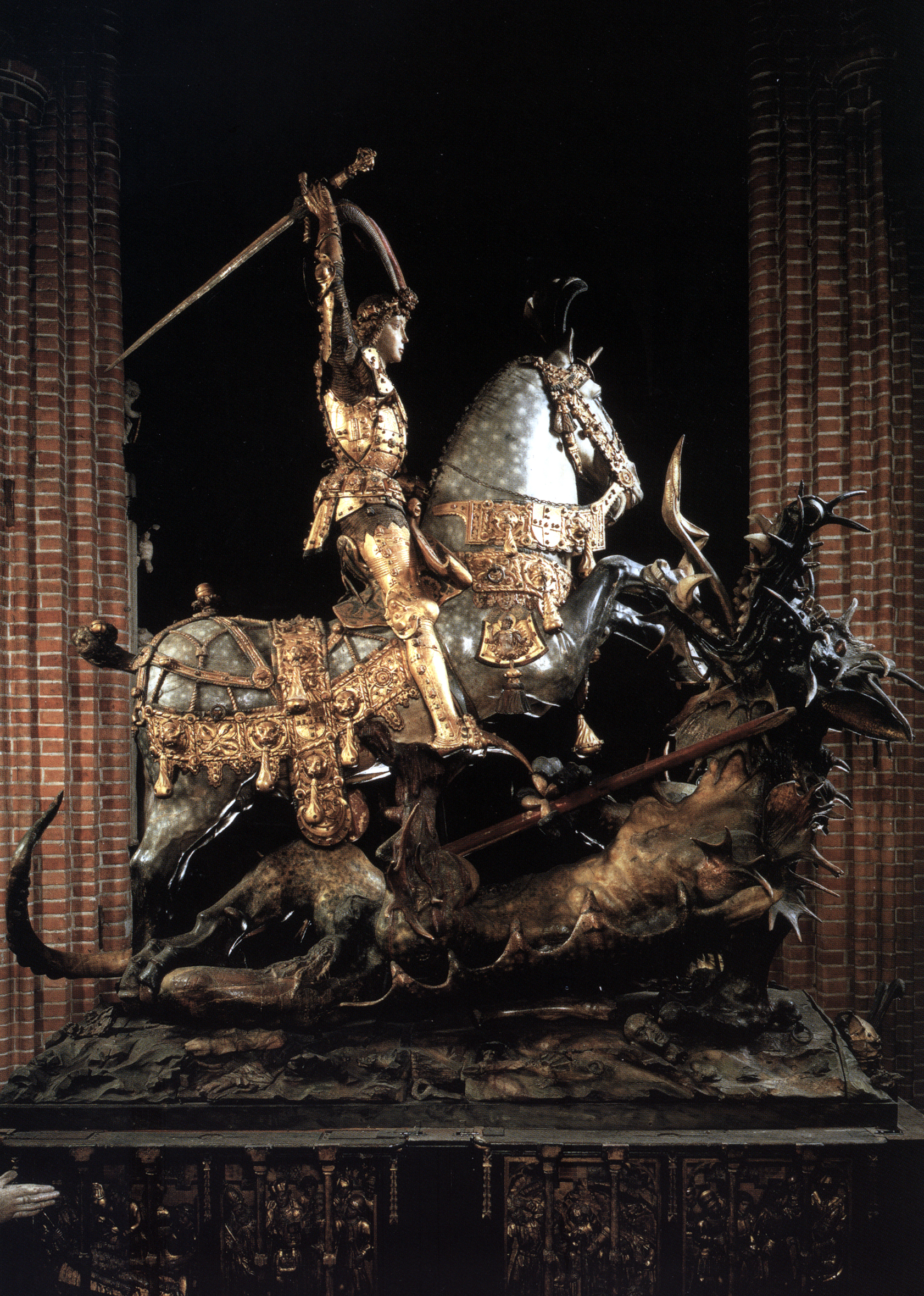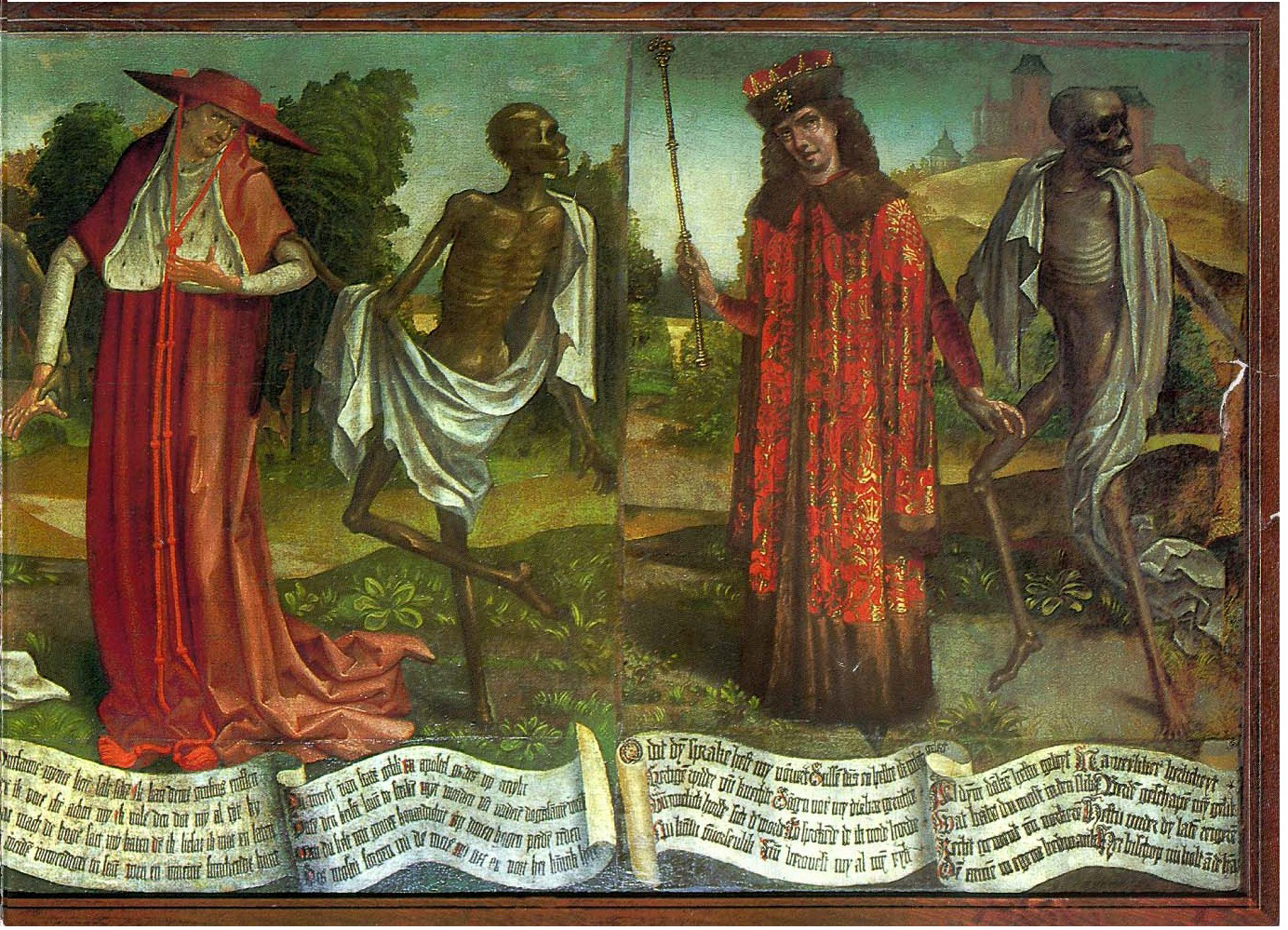Notke’s Saint George was commissioned in 1471 by the Swedish regent Sten Sture the Elder to commemorate his victory in the Battle of Brunkeberg. It was also intended to be his tomb, and resides in Storkyrkan, in Stockholm.
A multitude of different materials were used to create this innovative piece: everything from string for the veins on the horse to real antlers for the dragon’s spines! Of course, the majority is carved wood, polychromed (brightly coloured) in order to lend it a high degree of realism.
The dragon is sinking its claws into the underbelly of the horse which rears up in pain, and as it rises its golden saddlery coupled with the gold and cerulean armour of the saint suggests the heavenly in the act of smiting the hellish, but also that victory over evil does not come without sacrifice. This contrasts starkly with the dour colouration and subordinate pose of the dragon as it writhes among the scattered remnants of previous victims.
We don’t traditionally see the dragon in this story kill the horse; however, the rearing pose is difficult to achieve which is perhaps why the dragon’s attack is necessary – it holds the pose in place. The outcome of this change to the narrative is wonderful though, and what we ultimately see is an opulent, courtly object fit for a king.
- Sarah


 Bernt Notke
Bernt Notke